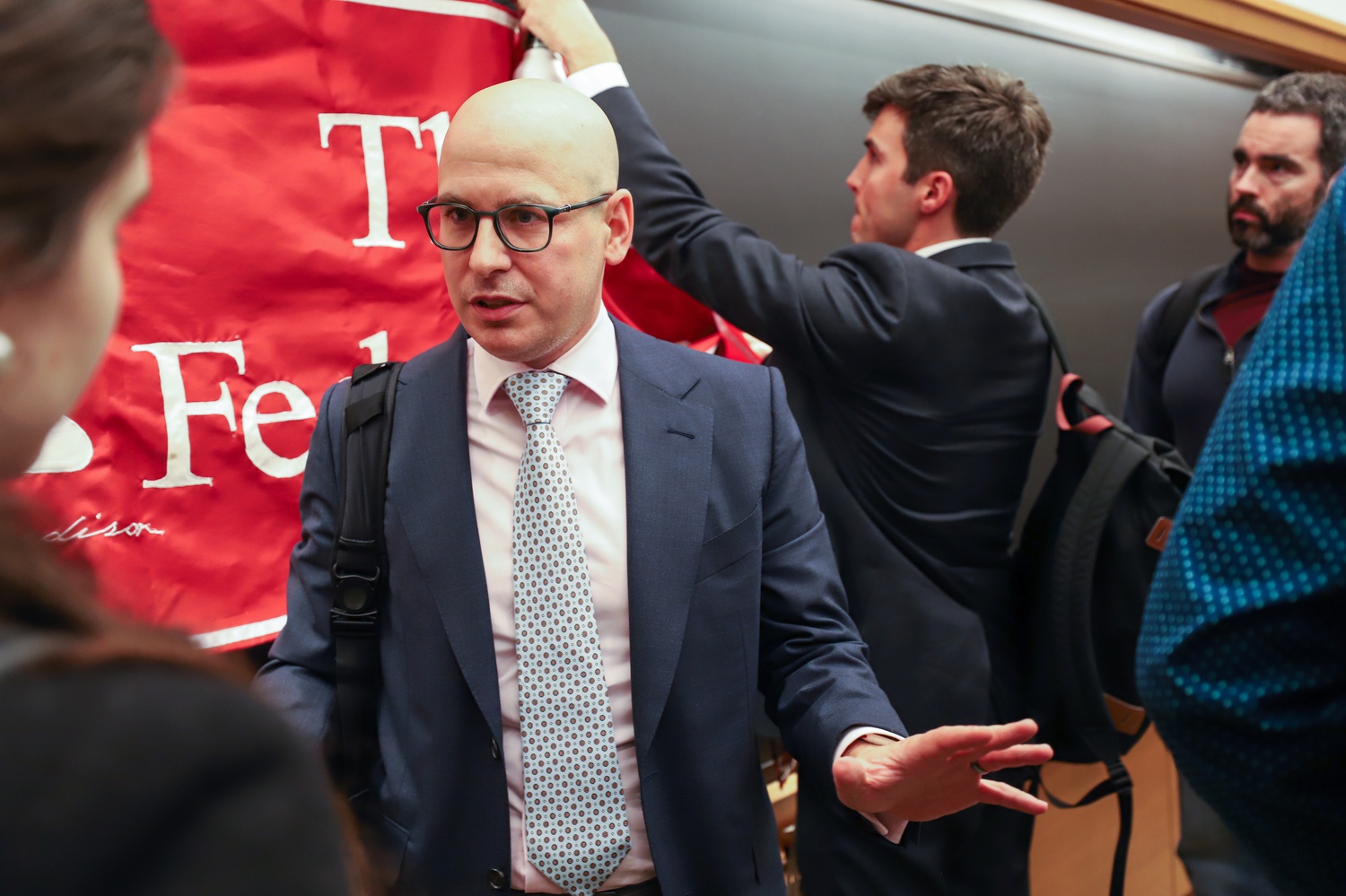
News
Pro-Palestine Encampment Represents First Major Test for Harvard President Alan Garber

News
Israeli PM Benjamin Netanyahu Condemns Antisemitism at U.S. Colleges Amid Encampment at Harvard

News
‘A Joke’: Nikole Hannah-Jones Says Harvard Should Spend More on Legacy of Slavery Initiative

News
Massachusetts ACLU Demands Harvard Reinstate PSC in Letter

News
LIVE UPDATES: Pro-Palestine Protesters Begin Encampment in Harvard Yard
Navigating the Affirmative Action Debate

At a Harvard Law School event earlier this month, Adam K. Mortara — the lead attorney for Students for Fair Admissions — the plaintiffs in the recent Harvard admissions lawsuit, spoke publicly on the ruling for the first time. Mortara challenged the ruling’s lack of explanation for how Asian American applicants receive lower personal scores in admissions ratings.“I guess there’s just something more personally appealing about African American and Hispanic applicants,” he said at the event.
After at least a dozen students in the crowd shouted their agreement, conflict ensued in student group chats, touching upon the comments’ legitimacy or lack thereof in the broader context of systemic racism and efforts to eliminate affirmative action. This conflict led Law School affinity groups to plan several joint discussion fora to promote further dialogue.
Both sides of this debate harbor legitimate and deeply felt concerns. We have previously urged Harvard to understand the implications of its internal studies on personal scores and have repeatedly defended affirmative action. But in order to fully understand the debate, we must acknowledge that arguments on both sides in this case are deeply personal. Feeling discriminated against and ascribed a personality on the basis of racial origin is a terrible experience, just as much as having one’s very existence at the University or other places of higher learning threatened and delegitimized. Such feelings understandably evoke strong emotions, and when so much is at stake for both groups, conversation can be difficult.
This difficulty is only exacerbated by the bad faith associated with the past political actions of individuals related to SFFA. Fisher v. University of Texas, a lawsuit that attempted to end affirmative action in 2016, was also brought by Edward Blum, SFFA’s president. Blum’s true aim, in this case as in Fisher, is clear — to end affirmative action in its entirety. But by portraying its goal in SFFA v. Harvard as helping Asian American students while working to undermine the mechanisms that empower racial minorities in the face of existing inequalities, SFFA conceals its aims under the benign cover of an imagined equality under meritocracy.
It is thus hardly surprising that this conversation has at times veered beyond the pale of open dialogue and good faith, with mistrust seemingly on all sides. Regardless, comments like those from the audience at the Law School event are unacceptable. Furthermore, explicitly saying so is a critical part of the difficult work of maintaining productive, respectful dialogue.
In light of this issue’s high potential for conflict, the extent to which the ongoing discussions have largely been facilitated within the institutional context of the Law School, should be hugely encouraging for those committed to defending such dialogues. In fact, the very existence of these respectful dialogues between students of both sides, each with deeply held beliefs but engaging with others in good faith, is itself a compelling argument for diversity on campuses of higher education.
When we share an institution, we have the opportunity to come together and engage each other in meaningful conversations. But without institutions that are comprised of students from different backgrounds, it is impossible for a diversity of viewpoints — each the product of a unique background — to accumulate at the same place and inform one another. Part of the critical work of affirmative action is precisely to preserve the place for students of diverse backgrounds to have these conversations, and that is why we must protect it.
This staff editorial solely represents the majority view of The Crimson Editorial Board. It is the product of discussions at regular Editorial Board meetings. In order to ensure the impartiality of our journalism, Crimson editors who choose to opine and vote at these meetings are not involved in the reporting of articles on similar topics.
Want to keep up with breaking news? Subscribe to our email newsletter.
